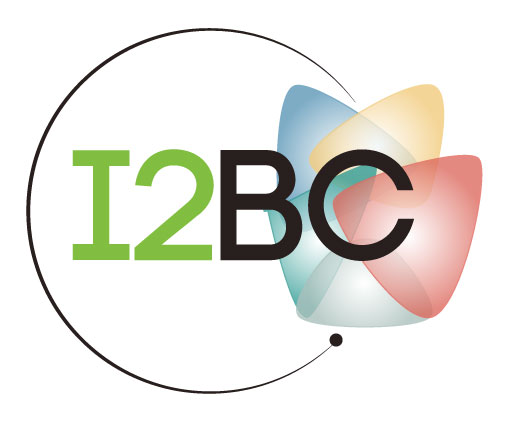Study of Functional domains involved in the interaction between the photoprotective cyanobacterial Orange Carotenoid Protein and its partners
Etude des domaines fonctionnels impliqués dans l'interaction entre la protéine cyanobactérienne photoprotectrice Orange Carotenoid Protein et ses partenaires
Résumé
Cyanobacteria, a photosynthetic prokaryote organism, harvest light for living. But harvesting too much light can be harmful. To protect themselves against this stress, cyanobacteria have developed several photoprotective mechanisms. This manuscript reports my work about one of them by combined technics of molecular biology, biochemistry and biophysics.Cyanobacterial light harvesting antennae are extra-membranous complexes called phycobilisomes. They funnel harvested energy into the photosynthetic reaction centers. Under high light, high energy input induces the formation of reactive oxygen species (ROS), which are harmful in excess. One of the existent photoprotective mechanisms helps to avoid ROS formation by decreasing the energy arriving at the reaction centers. The main actor of this mechanism is the photoactive Orange Carotenoid Protein (OCP) that binds to the phycobilisome, and induces an increase of the part of energy dissipated as heat. The OCP is a protein composed by two globular domains (called N- and C- terminal) and binds a carotenoid cofactor. High intensity of blue-green light triggers conformational changes in the inactive orange OCP, which turns red and is now able to binds the PBs. Under low light conditions, this mechanism is turned off by another protein, the Fluorescence Recovery Protein (FRP).The first chapter of this manuscript reports the study of the specificity of OCPs isolated from two strains for different classes of phycobilisomes with different core architecture. The second describe the development of a method to produce holoOCP in E. coli cells. Furthermore, it reports the characterization of the Synechocystis, A. variabilis and A. platensis OCPs isolated from E. coli. The third chapter presents the tridimensional structure of the active N-terminal domain of the OCP. In this chapter, we demonstrate that the carotenoid undergoes a 12anstrom movement upon photoactivation. The fourth chapter rapports that the N-terminal arm of the OCP helps to maintain closed the inactive orange OCP in darkness or low light, avoiding OCP activation and consequent unwanted PBs fluorescence quenching. The fifth presents the resolution of the structure and the identification of the active site of the FRP. These data allow to compute a predictionnal model of interaction between OCP and FRP. I assessed the validity of the model by isolating several modified OCPs. Results shown in chapter 6 report that the aspartate 220 end the phenylalanine 299 are required for effective FRP action.
Les cyanobactéries sont des organismes procaryotes photosynthétiques. Si l’énergie leur est essentielle, elle peut également être délétère. Afin de se protéger, elles ont acquis plusieurs mécanismes de photoprotection. La thématique de ma thèse est l’étude de l’un d’entre eux par des approches combinées de biologie moléculaire, biochimie et biophysique.Les antennes collectrices de lumière des cyanobactéries sont des complexes extra-membranaires solubles appelés les phycobilisomes. Ils permettent de canaliser l'énergie vers les centres réactionnels des photosystèmes. Sous forte lumière, l'afflux d’énergie y parvenant crée notamment des espèces réactives de l’oxygène, ce qui est délétère pour la cellule. L’Orange Carotenoid Protein (OCP) est impliquée dans un mécanisme de photoprotection qui diminue l'énergie arrivant au niveau des centres réactionnels en augmentant la part d’énergie dissipée sous forme de chaleur. L’OCP est une caroténo-protéine composée de deux domaines globulaires N- et C-terminal qui lie un caroténoïde. Cette protéine photoactivable est à la fois le senseur, et l’acteur du mécanisme de photoprotection. Le mécanisme est désactivé par une seconde protéine, la FRP (Fluorescence Recovery Protein).Le premier chapitre de ce travail de thèse rapporte l’étude de la spécificité des OCPs isolées chez deux souches différentes pour différentes classes de phycobilisomes dont l’architecture du cœur diffère. Le second chapitre présente la méthode mise au point au laboratoire de production de l’OCP chez E.coli, ainsi que la caractérisation d’OCPs clonées depuis le génome de Synechocystis, A. variabilis et A. platensis et surexprimés chez E. coli. Le troisième présente la structure tridimensionnelle du domaine N-terminal, qui est le domaine effecteur de l’OCP. Dans ce chapitre, nous démontrons que le cofacteur caroténoïde se déplace de 12 angstrom au sein de l’OCP lors de la photoactivation. Le quatrième rapporte que le bras N-terminal de l’OCP est une structure singulière qui maintient la protéine fermée à l’obscurité, évitant que l’OCP ne s’active sous faible lumière, ou à l’obscurité. Le cinquième présente la résolution de la structure et l’identification du site actif de la FRP qui nous ont permis de prédire in silico le site d’attachement putatif de la FRP sur le domaine C-terminal de l’OCP. Dans le chapitre 6, je rapporte que deux résidus, l’aspartate 220 et la phénylalanine 299, sont requis pour que l’activité de la FRP soit maximale, confirmant le site d’interaction prédit.
Origine : Version validée par le jury (STAR)
Loading...

